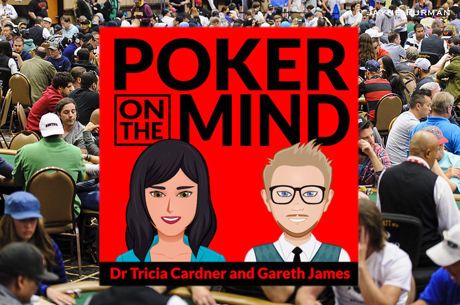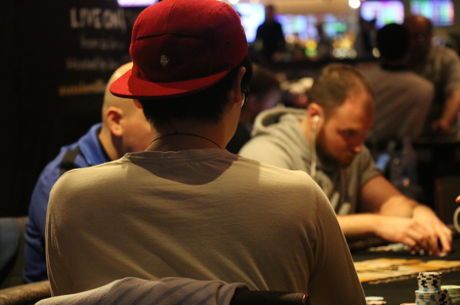Bluffing When an Opponent's Range is Weak

In small stakes no-limit hold'em, we should always be looking to bluff versus weak ranges and hold back when facing strong resistance.
This doesn't mean never bluffing in large pots. After all, sometimes pots can grow large without an opponent's range necessarily becoming strong �� e.g., when there is a three-bet preflop, when a hand is multi-way, or when there are lots of draws about but not too much strength shown.
It is not enough just to say a pot is big, but ranges must be strong, too, for us to be cautious about bluffing. But if the circumstances are right and in the right context, we should be able to find spots to bluff weak hands off big pots.
Here's a hand played at the six-handed 100NL online tables that demonstrates what I'm describing �� a player bluffing the river in a situation when the pot is big and his opponent's range is weak.
A Preflop Three-Bet and Two Calls
With the blinds $0.50/$1, a recreational player who was having a very big day (with just over $680 on the table) raised to $3.50 from under the gun and was called by a hopeful regular next to act starting with about $110.
It folded around to another regular in the big blind who had a stack of $115. Ordinarily the big blind should be looking to call with most of his continuing range in this spot, but because of the large size of the open, the cold-call being added to the pot, and the potential for a recreational player on a rush to have a wide range, this heady big blind made a squeeze play and reraised to $14.
Unfortunately for him, his three-bet didn't take down the $8.50 already in the pot without a fight, as both of his opponents called, pushing the pot up around $42.
Action Freezes on the Flop
The flop came down A?8?9? and the action suddenly froze as it went check, check, check.
It is not hard to imagine strong preflop hands with which the big blind might want to give up on this board, namely hands like J-J, Q-Q, and K-K.
Because both players behind have wide, diverse ranges �� a recreational player on a rush might not fold much of anything after raising under the gun, and the same goes for the regular behind closing the action �� many hands make sense for the big blind to check.
Checks all around does not eliminate the chances someone has an ace. A hand like A?2? would not mind keeping the pot small, while the same could be said of A-J. For the time being, one suspects we can eliminate 9-9, 8-8, 9-8, A-8, and probably A-9 from everyone's ranges.
Though A-A could slow play the flop from the big blind's point of view, the board is draw-heavy enough that out of position a continuation bet is probably in order. In other words, by checking the flop everyone has eliminated the strongest hands from their ranges.
This takes us back to the principle mentioned off the top �� big pots usually mean strong ranges, but not always. Going to the turn we now have reason to believe all three players are in the weaker portions of their range as far as this board is concerned.
A Coordinating Turn
The turn was the 7?, making the board A?8?9?7?.
The big blind checked again, signaling a strong desire not to be further involved in the pot. The UTG recreational player took this as a cue, making a nearly half-pot bet of just over $20.
The regular in position just flat-called the bet, as he probably should do with his entire range. After all, recall he (and everyone else) likely wasn't strong after the flop, so only 6-5 and 7-7. and even less likely 9-7 or 8-7 type hands have improved to value hands here.
Even when the regular finds himself with one of these hands, or a J-T with which he didn't take a stab on the flop, he should likely just call the turn to protect his more vulnerable T-T, T-9, and A-J type hands.
The big blind ducked out of the way. The pot was now about $82, with the regular having just over $76, well-covered by the recreational player's big stack.
Firing on a Blank River
The river was the 3?, completing the board as A?8?9?7?3?. At the sight of that blank-looking river card, our enterprising recreational player moved all in.
There are not that many hands that make sense here for value �� J-T, 6-5, 7-7, A-7, 8-7, and A-Q, perhaps. At the same time, it is still difficult for the UTG's opponent to call. Almost all of his river range is going to be one-pair hands, especially if he did have a raising range on the turn with their value hands.
In this instance, the recreational player's roll came to an end. He had semi-bluffed the turn with K?10?, and fully-bluffed the river when the draw didn't come in. But the regular picked him off by calling with 6?5? (he'd turned the straight).
While the UTG player's prefop call of the three-bet was surely an error, his postflop decision-making cannot be faulted too much. There was a lot of money in a pot and he was facing a weak range. He ran into the top of it this time, but often enough, he'll get a fold in this spot.









